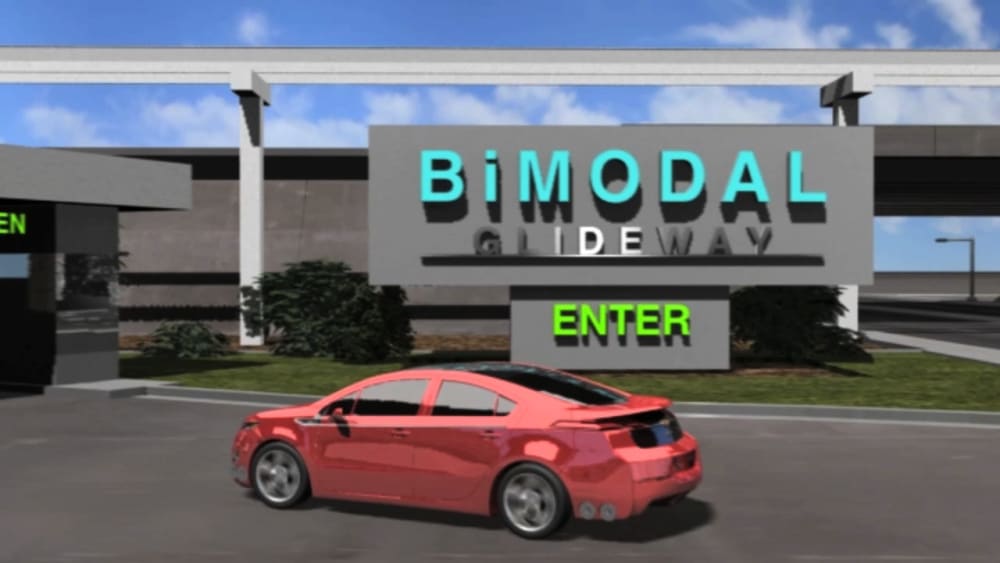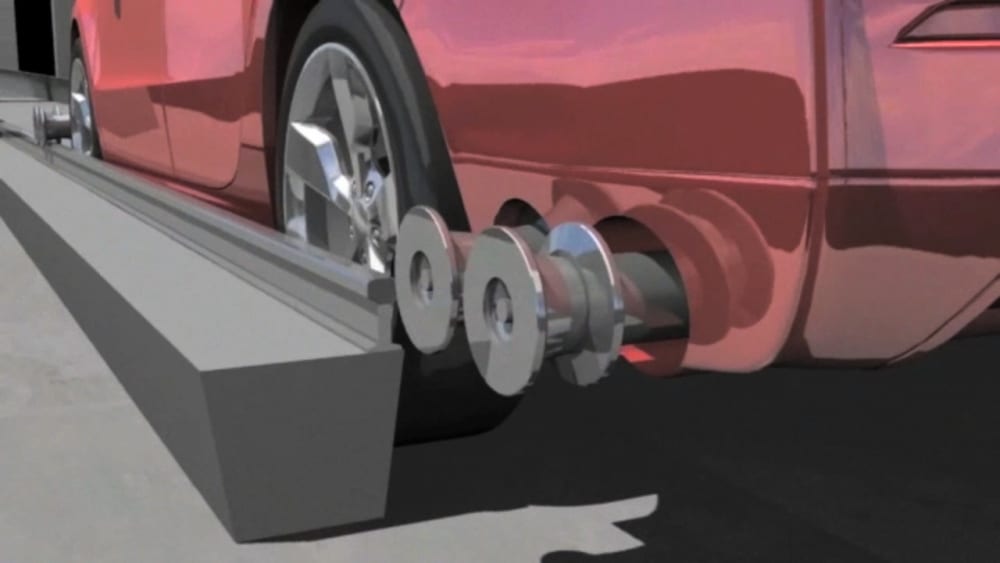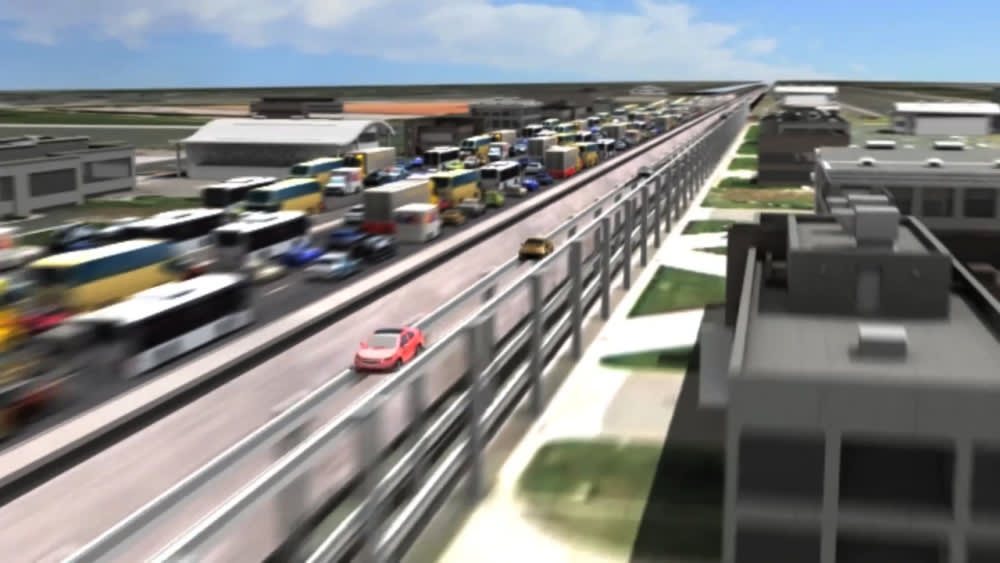
The BiModal Glideway (BMG) project is a new incarnation of the 60 year old possibility of bimodal transportation. Bimodal transportation involves vehicles that can operate on conventional streets and highways and on separated guideways. In the former they are driver controlled; in the latter they are system controlled and travel without driver intervention.
Automobiles using BiModal technology enter onto a Glideway and automatically convert to all-electric, high speed vehicles, no longer requiring driver control. Riding on a single lane, grade separated Glideway, each vehicle is controlled by vehicle-Glideway interacting systems. The non-stop traffic would flow more swiftly and more safely than conventional traffic, and drivers would be freed up for other activities while on the Glideway. On existing roadways the vehicles operate conventionally.
The BMG will solve or greatly reduce multiple problems related to ground transportation: traffic congestion, safety (reduced accidents, death, injury, and damage), dependence on oil imports, use of highways, and air/road pollution.
Driving will also be easier and faster from origin to destination. A single lane Glideway can handle 15,000 vehicles per hour, more than three lanes of highways at almost twice the speed (120 mph). In addition the BMG uniquely solves the last-mile problem. It also addresses the deep and widespread desire for the freedom to go where we want, when we want, and how we want while gaining all the advantages of a personal rapid transit system (PRT).
First application would be in metropolitan areas with heavy traffic corridors. The SF Bay Area or the greater Los Angeles area offer ideal conditions.
The potential market is the entire transportation-using public. Most people would buy bimodal cars; others would rent, or take advantage of captive PRT vehicles.
Other important users will be the materials, cargo, mail, and parcel delivery services using inexpensive PRT captive non-street capable, driverless vehicles. These dedicated, lightweight, Glideway only vehicles will traverse between depot facilities designed to accept, control, monitor, and conduct whatever instructions dictate, i.e., unload, deliver, reload, move to another local Glideway, store temporarily, etc. This is also a form of PRT or automated people movers, designed to transfer people between people terminals established by transportation authorities.
The BMG will require a combination public and private partnership to build the Glideways, set standards for the bimodal vehicles and to manufacture them. Much of this can be financed out of the expense of repairing, replacing, or expanding the new highways required for expected increases in driving populations. Government involvement would provide enormous economic stimulus.
There are currently two dominant competing approaches to the future of ground transportation: high speed rail and self-driving cars. High speed rail does nothing to solve the last mile problem. Self-driving cars address safety, but do little for other problems, e.g., gridlock and speed of travel. We believe the Bi-Modal Glideway is a third and better choice.
Video
-
Awards
-
 2012 Top 100 Entries
2012 Top 100 Entries
Like this entry?
-
About the Entrant
- Name:William Davis
- Type of entry:individual
- Patent status:patented








